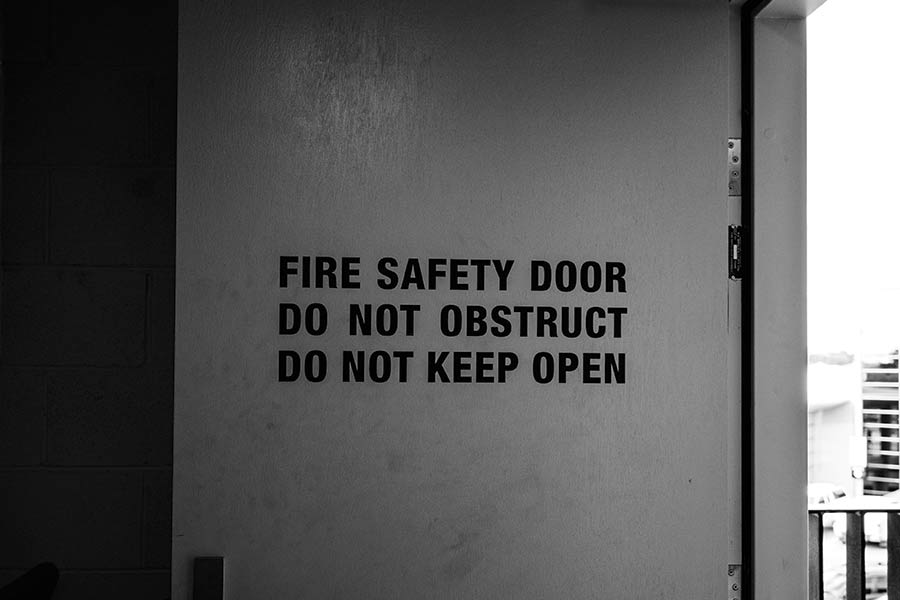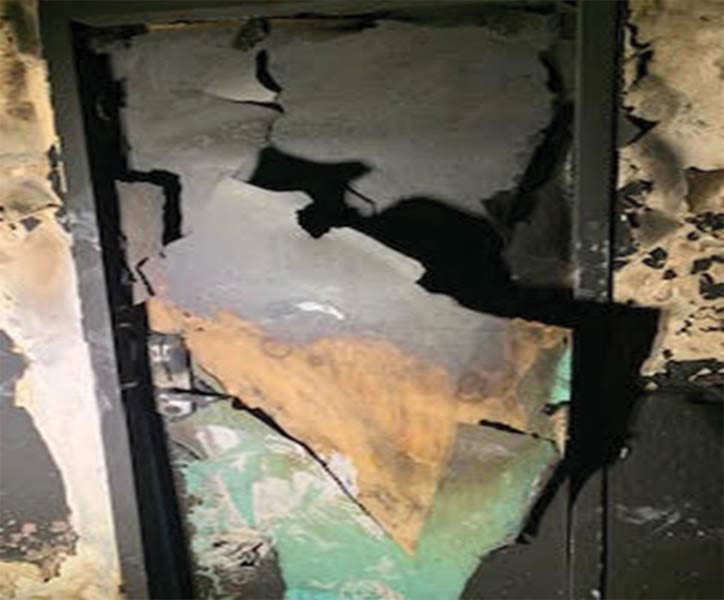The Importance of Fire Doors: Your First Line of Defence Against Fires

Fire is a devastating force that can strike anywhere, anytime, putting lives and property at risk. When fires occur, having robust fire safety measures in place is of the utmost importance. One crucial element of fire safety that often goes unnoticed but plays a significant role in preventing the spread of fire is fire doors. These unassuming doors are your first line of defence against the destructive force of flames, and understanding their importance is essential for safeguarding lives and property.
Being experienced firefighters, we have seen the damage which can be done due to bad fitting or lack of fire doors. Through this, we want to educate and encourage you to take the time to ensure that your property is properly fitted with the correct standard of fire doors.
What are Fire Doors?
Fire doors are specially designed doors that are engineered to resist the spread of fire and smoke within a building. They are an integral part of a building’s passive fire protection system, working in conjunction with fire alarms, sprinklers, and fire extinguishers to create a comprehensive fire safety strategy.
Unlike standard doors, fire doors are constructed with fire-resistant materials, including a core that can withstand high temperatures and prevent flames and smoke from passing through for a period of time. Commonly, these doors are made of materials such as steel, gypsum, or solid wood, which provide excellent fire-resistant properties.
How Do Fire Doors Work?
Fire doors work on the principle of compartmentalisation, a common term in the fire industry. This means they slow the spread of the fire by diving the building into compartments. Containing the fire in one area and preventing it from spreading quickly to other parts of the building.
This containment buys valuable time for occupants to evacuate safely and allows firefighters to control the blaze before it engulfs the entire structure. The intumescent seals around the edges of the door expand when exposed to heat, creating a barrier that blocks the passage of flames and smoke. Additionally, the fire-resistant core of the door helps to maintain its structural integrity, even under extreme temperatures.
Key Benefits
- Life Protection: The most crucial benefit of fire doors is the protection of human life. By containing the fire and smoke, fire doors create safe evacuation routes, minimising the risk of injury or death during a fire emergency.
- Property Protection: Fire can cause extensive damage to property. Fire doors can help limit the destruction by preventing the spread of flames to other areas, giving firefighters a better chance to extinguish the fire with less collateral damage.
- Legal Compliance: Adhering to fire safety regulations and the installing fire doors is often a legal requirement for commercial buildings. Failure to comply can result in severe penalties and compromise insurance coverage.
- Peace of Mind: Knowing that your building is equipped with properly installed and functioning fire doors provides peace of mind for occupants, employees, and visitors.
The photos below show the effects of having a properly fitted, functional fire door. Here you can see the exterior of the room almost completely destroyed by fire. The room past the door, however, has no signs of fire or smoke damage.

In front of the fire door fully closed

Behind the fully closed fire door
Maintaining Fire Doors
Fire doors are only effective when they are well-maintained and in good working condition. Regular inspections and maintenance are crucial to ensure that they perform as intended. Here are some maintenance tips:
- Check fire doors regularly for any signs of damage or wear.
- Check that the intumescent seals are intact and free from obstructions.
- Check that self-closing mechanisms and door closers are functional.
- Conduct fire door testing and certification as recommended by fire safety professionals.
- Never prop open a fire door.
Fire doors should be checked regularly by a professional and will also be checked as part of your fire risk assessment.
In Conclusion
These unassuming barriers play a critical role in saving lives and minimising property damage during a fire. Understanding their importance, ensuring proper installation, and conducting regular maintenance are essential steps in creating a comprehensive fire safety plan for any building.
Remember, fire safety is everyone’s responsibility. By investing in fire doors and other fire protection measures, you contribute to a safer environment for yourselves and others, ensuring that you are better prepared to face the unexpected and protect what matters most.
ERMCO provide fire risk assessments, premise risk information and free fire safety advice for all their clients.
